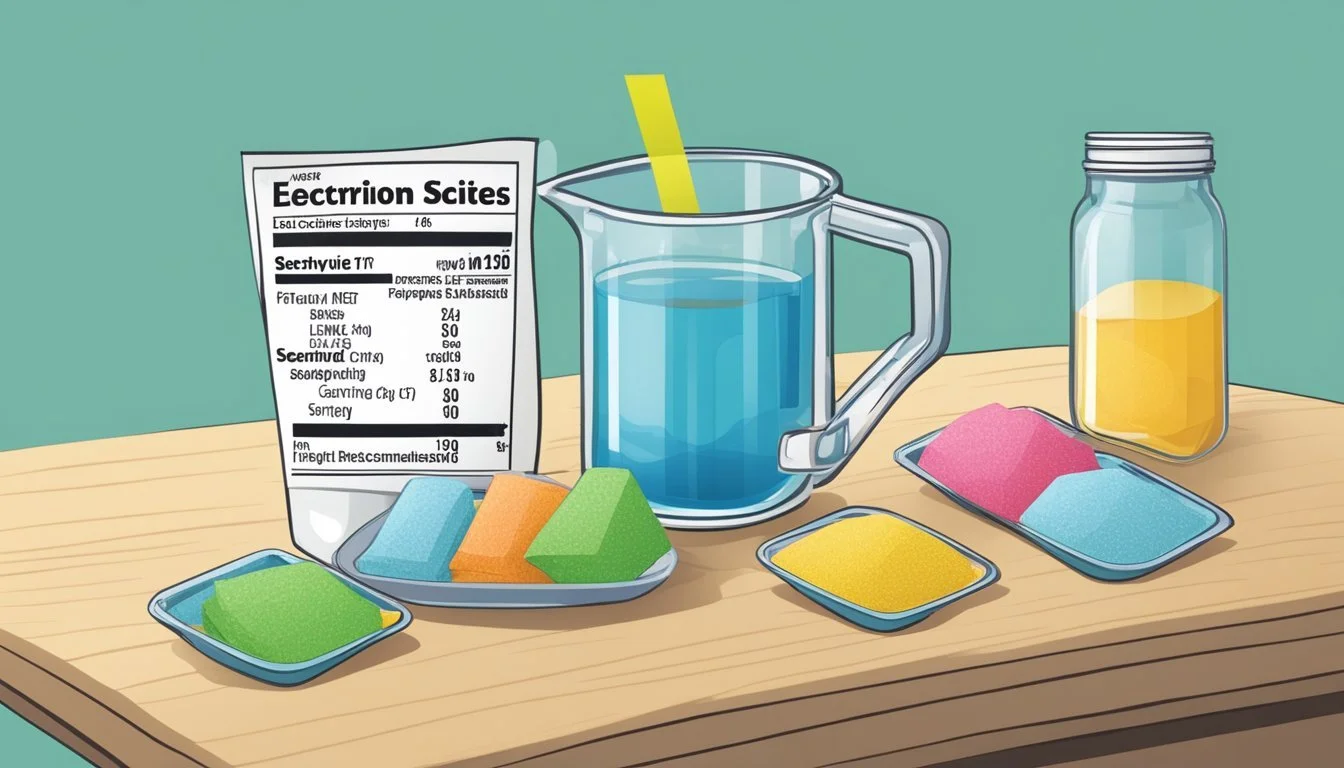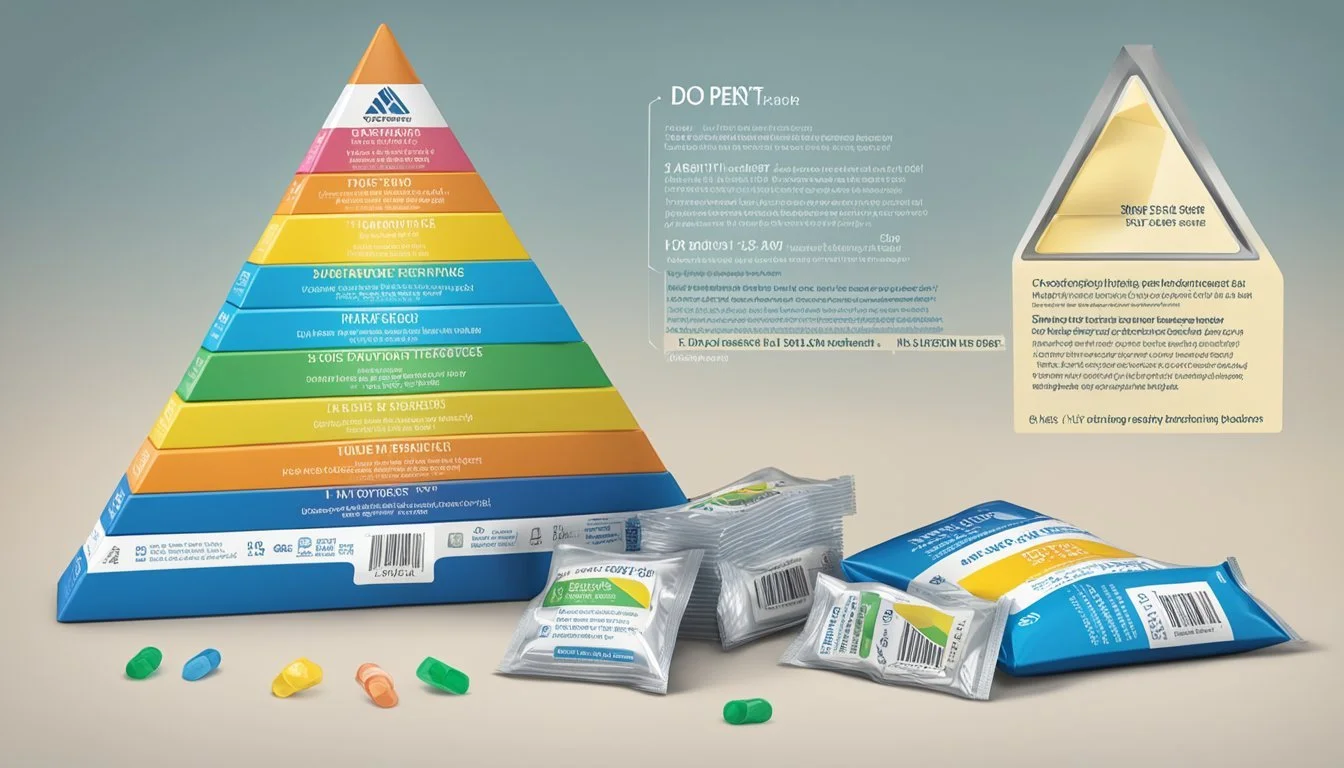How Many Servings of LMNT Electrolytes Is Too Much
Expert Guidelines
Determining the optimal number of LMNT electrolyte servings requires a careful balance. Electrolytes like sodium, potassium, and magnesium are crucial for maintaining proper hydration and overall health. Each LMNT stick pack contains 1000 mg of sodium, 200 mg of potassium, and 60 mg of magnesium, providing a convenient way to meet daily requirements.
Consuming more than 2-3 stick packs of LMNT per day might exceed the recommended daily intake of these electrolytes. The latest science suggests consuming 4-6 grams of sodium, 3.5-5 grams of potassium, and 400-600 milligrams of magnesium per day. It's essential to consider individual dietary gaps and consulting a healthcare professional can help tailor intake to personal needs.
Excessive consumption can potentially disrupt the body's electrolyte balance, leading to adverse effects. Finding the right balance is key to maximizing the benefits of LMNT electrolytes for health and hydration.
Understanding Electrolytes
Electrolytes play a crucial role in maintaining various bodily functions such as fluid balance, muscle contraction, and regulating blood pressure. Sodium, potassium, magnesium, and chloride are some key electrolytes involved in these processes.
Role of Electrolytes in the Body
Electrolytes are minerals that carry an electric charge and are vital for the body's functions. Sodium helps maintain fluid balance and supports nerve function. Potassium is essential for muscle contraction and heart health. Magnesium plays a role in muscle and nerve function, as well as in maintaining a steady heartbeat. Chloride helps maintain fluid balance and is a key component of digestive acids.
Fluid Balance: Electrolytes help keep the body's fluid levels balanced. Sodium and chloride, for example, work together to ensure that cells neither shrink from dehydration nor swell from too much water.
Muscle Contraction: Potassium and magnesium play essential roles in the contraction and relaxation of muscles. Without adequate levels, muscle cramps or spasms can occur.
Blood Pressure Regulation: Sodium and potassium are integral in controlling blood pressure. Too much sodium and too little potassium can lead to hypertension, a risk factor for heart disease.
Sources of Electrolytes
Electrolytes can be found in various whole foods and dietary supplements. Sodium is commonly found in table salt and processed foods. Potassium sources include fruits like bananas, oranges, and vegetables such as spinach and potatoes. Magnesium is abundant in nuts, seeds, whole grains, and leafy green vegetables. Chloride is often ingested through table salt and meats.
Whole Foods: A balanced diet rich in vegetables, fruits, nuts, and whole grains can easily provide the necessary electrolytes. Foods such as spinach, bananas, and avocados are excellent sources.
Electrolyte Drinks and Supplements: In scenarios of intense exercise or specific health conditions, additional supplementation may be required. Products like LMNT offer a convenient way to ensure adequate intake of sodium, potassium, and magnesium.
Understanding these fundamentals helps manage and optimize one's health through proper electrolyte balance, whether through diet or supplementation.
Benefits of LMNT Electrolytes
LMNT electrolytes provide essential minerals that aid in hydration, boost physical performance, and cater to various dietary needs. These electrolytes help balance sodium, potassium, and magnesium, which are vital for the body's functions.
Hydration and Physical Performance
Maintaining proper hydration is crucial for athletes and individuals engaging in intense workouts. LMNT provides a precise ratio of 1000 mg of sodium, 200 mg of potassium, and 60 mg of magnesium per serving. This helps to replenish electrolytes lost through sweat, enhancing energy, endurance, and overall performance.
The sodium-potassium pump plays a key role in muscle function. Adequate sodium levels prevent muscle cramps and fatigue. Potassium facilitates efficient muscle contractions, while magnesium reduces muscle soreness and aids in recovery. This balance supports both short-term workouts and long-term athletic goals.
Dietary Considerations
LMNT electrolytes are tailored for those on a low-carb, keto, or paleo diet. These diets can often lead to electrolyte imbalances due to reduced carbohydrate intake, which lowers stored water and electrolytes in the body.
For individuals practicing intermittent fasting, LMNT ensures that electrolyte levels remain stable without breaking a fast. This helps to maintain energy levels and avoid related fasting headaches or dizziness. With no added sugars or artificial ingredients, LMNT complements dietary restrictions without compromising on nutrient intake.
Balancing Electrolyte Levels
Balancing electrolyte levels is essential to health. LMNT’s formulation supports the body's sodium-potassium pump, ensuring optimal cell function. Proper hydration and electrolyte balance are critical for nerve transmission, muscle contraction, and fluid regulation.
LMNT’s mix of minerals aids in the replenishment of electrolytes lost through sweat or urine. This balance prevents imbalances that can lead to conditions such as hyponatremia (low sodium levels), ensuring proper function of cells and overall bodily systems. By providing a science-backed ratio of electrolytes, LMNT helps to maintain this delicate balance, promoting better hydration and supporting general well-being.
Recommended Intake of Electrolytes
Knowing how much sodium, potassium, and magnesium to consume daily is crucial for maintaining health and optimal performance. Intake recommendations vary based on individual needs and activity levels.
Daily Values for Sodium, Potassium, and Magnesium
The recommended daily intake of electrolytes includes 4-6 grams of sodium, 3.5-5 grams of potassium, and 400-600 milligrams of magnesium. These values are based on maintaining adequate hydration and electrolyte balance, especially for active individuals.
Nutrient Daily Value Sodium 4-6 grams Potassium 3.5-5 grams Magnesium 400-600 mg
For athletes or those who exercise frequently, these values can prevent deficiencies caused by excessive sweating. Electrolytes are essential for muscle function, nerve signaling, and fluid balance.
Special Considerations for LMNT
Each serving of LMNT contains 1000 mg of sodium, 200 mg of potassium, and 60 mg of magnesium. This precise blend supports hydration needs, particularly for those losing electrolytes through sweat.
Serving Size: The dosage is customized based on individual requirements. One might need more LMNT servings if involved in high-intensity workouts or living in hot climates.
Listen to Your Body: It's vital to monitor how your body responds to electrolyte intake. Adjust the number of servings accordingly to avoid excessive consumption, which can lead to adverse health effects.
Regular whole foods are the best source of electrolytes, but supplements like LMNT can effectively fill the gaps when necessary.
Potential Risks of Excessive Intake
Excessive intake of LMNT electrolytes can cause various health issues, ranging from immediate symptoms like headaches to long-term risks such as heart disease and stroke.
Recognizing Overconsumption Symptoms
One of the first signs of electrolyte overconsumption is headaches. This can be due to an imbalance in sodium and other electrolytes. Additional symptoms include muscle cramps, nausea, and confusion.
These symptoms occur because the body's electrolyte balance is disrupted. Excessive sodium can lead to high blood pressure. This, in turn, may cause headaches and a general feeling of discomfort.
Irritability and fatigue are also common when the body struggles to maintain balance. Immediate action should be taken if these symptoms are noticed after consuming too many electrolyte servings.
Long-Term Health Implications
Long-term overconsumption of LMNT electrolytes, particularly sodium, can lead to serious health issues. Sodium is crucial for bodily functions, but too much can increase blood pressure. Chronic high blood pressure strains the heart and arteries, raising the risk of heart disease and stroke.
Excessive sodium intake can also burden the kidneys. Over time, this can lead to reduced kidney function or disease. The kidneys work to filter excess sodium and fluids, and overloading them can cause damage.
Heart disease and stroke are severe consequences of prolonged high sodium levels. Maintaining an appropriate intake of LMNT electrolytes ensures that these long-term health risks are minimized. Always monitor electrolyte intake and consult healthcare professionals if unsure about appropriate dosage.
LMNT Electrolyte Product Information
LMNT electrolyte drink mixes are designed to support optimal hydration with a well-balanced combination of sodium, potassium, and magnesium. Their products cater to multiple flavor preferences and provide a healthier alternative to many other market options.
Flavor Profiles and Ingredients
LMNT offers a range of vibrant flavors such as Grapefruit Salt, Orange Salt, Raspberry Salt, Watermelon Salt, and Citrus Salt. Each serving delivers a precise ratio of 1000 mg sodium, 200 mg potassium, and 60 mg magnesium, ensuring effective hydration.
Ingredients include:
Sodium chloride for saltiness and balance
Potassium chloride for additional electrolyte support
Magnesium malate, enhancing muscle and nerve function
Importantly, these mixes do not contain sugar, artificial ingredients, colors, or fillers, appealing to health-conscious consumers.
Comparing LMNT to Other Electrolyte Drinks
Unlike many conventional electrolyte drinks that are high in sugar and artificial additives, LMNT prides itself on being a clean, straightforward product. While other drinks often rely on sugar for flavor and effect, LMNT uses natural flavorings with no sugar.
Price Comparison:
LMNT: Approximately $1.50 per serving or as low as $1.12 with bulk purchases.
Competitors: Prices can vary significantly but often include less optimal ingredients.
This makes LMNT not only a potentially healthier choice but also cost-effective when considering the quality of ingredients.
Usage Guidelines for LMNT Electrolytes
When using LMNT Electrolytes, it is essential to tailor the intake based on individual needs and circumstances. This section provides guidance on adjusting consumption frequency according to lifestyle factors and highlights key precautions to consider.
Adjusting Intake Based on Lifestyle
Different lifestyles necessitate varying electrolyte requirements. Activity level plays a crucial role. For those with strenuous exercise routines, 1-2 stick packs or cans per day may suffice. However, individuals engaging in high-intensity workouts may require more.
Dietary choices also influence electrolyte needs. Those following low-carb or keto-friendly diets often face increased sodium requirements. Likewise, situations like pregnancy or breastfeeding necessitate careful monitoring and potentially increased intake to meet unique hydration needs.
It's advisable to start with a moderate amount, such as one stick pack per day, and adjust based on how the body responds. Consulting a healthcare provider is recommended, especially when special health conditions or medications are involved.
Warnings and Precautions
While LMNT offers a convenient hydration solution, specific precautions must be observed. Overconsumption of electrolytes, especially sodium, can lead to adverse health effects. The recommended daily intake ranges are 4-6 grams of sodium, 3.5-5 grams of potassium, and 400-600 milligrams of magnesium.
Individuals with pre-existing health conditions such as hypertension or those on specific medications need to be cautious and consult professionals before increasing electrolyte intake. Special populations, including pregnant or breastfeeding individuals, should also seek medical advice to ensure safety.
Maintaining a balance and attentive monitoring can help avoid complications and optimize health outcomes.
Incorporating LMNT into Your Diet
Incorporating LMNT into your diet requires thoughtful meal planning and effective hydration strategies to enhance daily wellness and overall health. By balancing the electrolytes you consume through LMNT with whole foods, you can ensure optimal hydration and well-being.
Meal Planning with LMNT
To incorporate LMNT into daily meal planning, consider the sodium, potassium, and magnesium content. Each serving of LMNT contains 1000 mg of sodium, 200 mg of potassium, and 60 mg of magnesium. Tracking these intake levels helps to avoid exceeding the recommended daily amounts.
Pair meals with LMNT by focusing on whole foods rich in natural electrolytes. Foods like bananas, spinach, and sweet potatoes offer potassium. Nuts, seeds, and leafy greens provide magnesium. Ensuring that meals are balanced can help maintain electrolyte levels without solely relying on supplements.
Integrating LMNT into various meals can also involve adding it to beverages. Mix LMNT with water, sparkling water, or even herbal tea to create hydration-friendly drinks that complement meals.
Hydration Strategies for Daily Wellness
Using LMNT as part of a daily hydration strategy is key for those with active lifestyles. Since LMNT provides significant sodium, potassium, and magnesium amounts, it supports hydration and electrolyte balance, especially after workouts or physical activities.
For hydration, start your day with a serving of LMNT mixed in water. This sets the tone for adequate fluid and electrolyte intake. Throughout the day, alternating LMNT with plain water helps prevent excessive sodium intake.
For those who consume coffee or tea regularly, incorporating LMNT can offset diuretic effects. Adding a serving of LMNT to a bottle of water after morning coffee helps maintain hydration.
Track daily water and LMNT intake to tailor consumption according to personal needs and activity levels. This ensures balanced electrolyte levels, enhancing overall health and preventing dehydration-related issues.
Monitoring Your Electrolyte Balance
Maintaining proper electrolyte balance is crucial for health and hydration. Identifying signs of adequate levels and knowing when to adjust intake can help prevent symptoms like fatigue and muscle cramps.
Signs of Adequate Electrolyte Levels
Balanced electrolyte levels support overall well-being and hydration. Adequate sodium, potassium, and magnesium can be identified by the absence of persistent muscle cramps, unusual fatigue, and irregular heartbeat.
Clear urine typically indicates good hydration. During workouts, recovery feels smooth, and energy levels remain steady. Monitoring thirst and ensuring it's kept at bay without excessive water intake is also important.
Recovery from intense exercise without prolonged soreness is another sign. Regular checks and assessments can help maintain optimal health.
When to Adjust Your Electrolyte Intake
Changes in exercise intensity, diet, or health status may require adjustments in electrolyte intake. Increases in physical activity or sweat loss necessitate more electrolytes, particularly for workouts under hot conditions.
Signs such as frequent fatigue, persistent muscle cramps, or unusually dark urine indicate adjustments are needed. Consultation with a healthcare professional is advisable for persistent symptoms.
Recovery time and energy fluctuations should be monitored closely. Reducing intake might be required if there’s puffiness or water retention.
Ensuring these levels are balanced helps maintain hydration and well-being without overloading the body.










